The Value of the Social Proof Phenomenon

The Social Proof Phenomenon is a foundation piece of how our culture buys now. Between Instagram Influencers, Yelp reviews, and 5 star Amazon products, most of us make purchase decisions on the value others see in the product. How can Social Proof and online reviews work for you?
The Social Proof Phenomenon
What do online reviews have to do with “Social Proof?” “Social Proof” is the phenomenon based on the fact that it’s easier to buy things or trust companies if we know that other people already have. Our peers provide the proof of something’s value. None of us would buy something on Amazon with 10,000 1 star reviews. We trust those 10,000 strangers because that product connects us as a community.
“Social proof” is also part of the transparency that builds brand trust. Most consumers (almost 88%) research a business before buying from them. A lot of that research comes from reviews and reading what other people have said about their experiences.
What Can Social Proof Do For You?
Reviews can help educate consumers on your products and services. Reviewers usually talk about their specific experiences in their reviews. It can be an easier way for potential customers to learn more about what you offer.
Reviews Boost SEO. Specifically, Google Reviews. Google indexes reviews connected to your listing to help filter results. Especially for local traffic. “Best __ Near Me” is decided by reviews and stars. Customers will often use your keywords in reviews without even realizing it. This helps Google learn about you.
What Can You Do To Collect Reviews?
People are inclined to leave reviews if they a specifically positive or negative experience. Therefore, work hard to provide an overwhelmingly positive expertise for your customers! (You should be doing this anyway; the review is just a byproduct. 😉 )
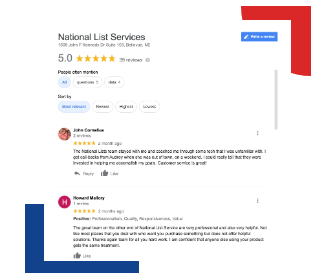
People like to do things for other people so a great way to collect reviews is to just ask for them! A follow up survey email after they buy from you is an easy way to this. Ask them specific, easy to answer questions about things such as: service response times, shipping times, product or service quality etc.
Make it easy to review you. No one has time to take 10 minuets following a complicated review survey with long required written answers. People are doing you a favor by reviewing you, show that you appreciate it by being respectful of their time and effort. Take out pain points of the review process: go through and make sure there aren’t any unnecessary steps or questions. Double check the user interface, id it easy to figure out?
Incentivizing your reviews (specifically ecommerce) is a big no-no! As temping as it is to show your appreciation for the review with a coupon or free shipping, or something: don’t. Both Google and Yelp have policies in place banning incentivized reviews. They will take the reviews down and give you a slap on the wrist.
What To Do With Reviews Once You Have Them
You have the reviews – now what? Here’s 2 ways to leverage them!
- Show them off
Let your reviews sell your product for you. Happy previous customers can be a great way to convince your potentials to buy from you! Show off your reviews on your home page with Google review widget or prominently feature some reviews as part of the design. Don’t forget to ask for permission first if you are going to highlight a specific review, especially if you are going to use their picture. - Engage with reviewers
let them know you appreciate them! It doesn’t have to be a big deal, simply liking the review or just saying thanks goes a long way. That little bit of effort can turn a happy customer into a loyal one. And a lot of marketing automation software makes replying to reviews across multiple platforms easy.
Do you have a favorite customer review?
While we are on the subject… leave us a review! 😜
How do these marketing channels stack up?
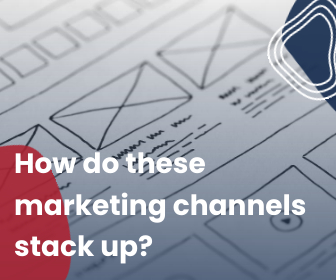
There are A LOT of different marketing channels out there. What are the pros and cons of some of the common ones?
Social Media
Pro
There are over 3.8 billion people on social media around the world. Social media is a fantastic way to connect with customers, build brand loyalty, and generate sales.
People don’t just want to buy from companies because they have good products and services. They want to know what your brand stands for in addition to what it sells. Social media can help potential customers get to you. Social media feel like a 1-on-1 conversation between the brand and consumer, which helps build loyalty.
Con
A lot of the value from social doesn’t show up immediately. It’s rarely simple to track social media’s ROI. Often the goal of social media is not just to generate sales but instead to build connections. Without measurable results, using social media can be discouraging.

Pro
Often it a brand’s only way to communicate with customers and can feel very one on one. A lot of millennial and gen z’ers expect to communicate with brands through email. Also, pretty much everyone has email so you know you will be able to communicate with people through email.
Con
We all get so. many. emails. Most office workers receive 127 every day. It can be hard to stand out from the crowd. People don’t have time to read emails that don’t actually provide them value.
Email marketing also has a lot of laws and rules connected to it that can hurt you if your aren’t careful!
Content/SEO

Pro
Customers often rely on a business’s website for information. Especially for local businesses, it can be the only way to know a shop hours or address. Putting the information on a website instead of a social media or directly in a browser legitimizes the information.
Good SEO gives your website credibility. It makes it easier for people to find your website when they search for it. And it helps create a smoother user experience.
Con
Bad SEO can hurt you. Most searchers never go past the first or second page of Google, though, which is why those top spots in the search results are so coveted. Having the proper SEO can prevent your website form getting organic traffic.
53% of all trackable website traffic comes from organic search. SEO is the main thing influencing how easy it is to find you online organically. Which is probably why it’s estimated that agencies and brands spent over $79.27 Billion on SEO services last year.
Google Ads

Pro
Where are people? On their phones. So, google ads is an extremely effective way to find people where they are. Google ads is great for brand awarness as well as retargeting. It is great if you want measurable results and analytics.
Con
Billboards, signs, posters, newspapers, and magazines all exist with in different physical spaces. With digital advertising however, we are all competing for the same ad space. That ad space is worth more now has less guarantees attached to it.
Trying to figure Google ads can feel like rocket science. There’s a large learning curve and it can a while to feel confident in the set up.
Print and Mail

Pro
Direct mail average open rate is somewhere between 68 and 90%, which is double, triple, or quadruple the average open rates of other marketing channels. Do people who open direct mail actually purchase? Yes! On average people who receive direct mail purchase 28% more items and spend 28% more money!
Why is direct mail so effective? It comes down to fact that we (humans) like getting mail. 41% of Americans of all ages look forward to getting their mail every day. We still want very real things in our hands, which is something totally lost in email inboxes or on social media. That tactile connection translates into 💰.
Con
Since Direct mail requires use of the postal system it has fixed costs. The graphic design of the mail piece may also have an additional cost. Using direct always requires a bit of math and if done wrong can hurt your ROI.
It’s not always posable to see direct, measurable results, from Direct mail campaigns. And if you can measure results, it may take a while to get the full picture.
Another thing that can be a disadvantage to direct mail is that you need a really good foundation of address data. The problem us that a lot of data providers don’t make sure that their data is accurate and that hurts the effectiveness of your campaign.
Connected TV

Pro
TV is a time-tested advertising channel. Although it’s a lot less common than it used to be, it can still be very effective. Many marketers are using CTV (connected TV) or OTT (over-the-top) channels to target consumers using streaming services and connected TV devices such as Hulu and Roku. Advertises are embracing these platforms as more and more ad space becomes available. Spending for CTV advertising is expected to grow from $6.94 billion in 2019 to $8.88 billion in 2020, a 28% increase.
Con
With customer attention spread so thin and cable tv subscriptions consistently falling, (over 16 million in the last five years) there’s a lot less advertising space available. Content consumption is at an all-time high and therefore, competition for viewer’s attention is as well. 84% of marketers say that it is getting harder to grab a consumer’s attention with television advertising alone.
Audiences today expect personalized and relevant targeted ads. Linear TV (cable and network television) often fall far behind in targeting capabilities. Therefore, it can be a challenge for advertisers to figure out how to integrate linear TV into their campaigns.
7 Ways To Make More Engaging Content
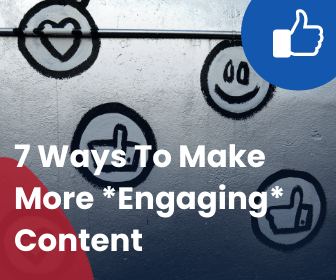
Content creation is an integral part of marketing or running a business in general now. However, a lot of companies struggle with creating content that generates engagement. Part of the value of content creation is that engagement and the conversation between brand and consumer. What can you do to create engaging content for your brand?
Here’s 7 things we have found to be essential in making quality content!
Know Your Audience
The content you create for one audience can be very different from another. Understanding the WHO is helpful first step.
It can also be helpful if you think of your audience as a single composite person. Instead of trying to talk to all of them, you are instead making content for one person. A lot of companies do this by making a buyer persona. That way you can think, “Would my buyer persona like this?” vs. “Would all my followers enjoy this content?”
Make a Plan
There is nothing more overwhelming than trying to maintain consistent content posting across multiple channels without a plan. It can feel like juggling snakes. 🐍 Making a plan can be as simple as figuring out what types of content you want to post and when it would be best to time to post it. The more specific your plan is the more you time you take out of the equation.
Part of making a plan is planning out your message and/or your angle. Now that you know who your audience is, think about what type of content would work best for them. Knowing what you want to talk about can make it easier to figure out what types of content would be best. Would your audience benefit from long form blog articles or would a TikTok series be more helpful? Both of those types of content take a lot of effort, so planning it out ahead of time is valuable!
Find Shared Passions
The sheer amount of product, companies, and information available is staggering. It is not enough anymore to have a good product available anymore, your brand ideals and personality need to match with the personality of your consumers. 56% of Gen Z consumers say that having shared passions and perspectives is a major factor when it comes to their engagement with a brand. However, most consumers are fantastic at sniffing out inauthenticity. Your brand personality and ideals need to actually be what you say they are. Actions speak louder than words!
What are the advantages of having a well-defined brand personality and ideals? Giving your company a personality makes things like content creation a lot easier. Knowing who you are also can help you make decisions about the direction you want to go in the future.
And 49% of young consumers say they will evangelize a brand they feel represents their values, likes, and personality.
Don’t be afraid of incorporating causes you care about into your brands personality! 72% of consumers want the brands they care about to be positive contributors to society. We’ve seen in recent years that many brands (especially smaller companies) connect their core brand to a charity or cause they care about. Younger consumers are 69% more likely to buy from a brand that contributes to a cause.
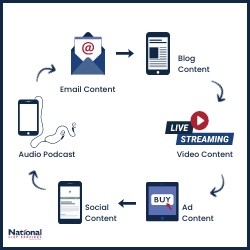
Keep It Simple
Don’t make it harder than it needs to be. No matter who your audience is, needlessly complicated language or content structure isn’t appreciated. Simple and honest is always good. Remember, why you are making the content. Is it to promote you or your brand? Then tone of the content should match your voice. People can see right through any inauthenticity if you are trying to make something that isn’t you.
It’s easier to connect with a brand online if you feel like you are talking to a real person. Does the content you are making sound personal?
Remember the Big Picture
Why do you want to make this content? Keep the big picture of your content in mind as well as each individual piece. Are you trying to promote a specific product or service? Don’t be afraid to include a call to action in your content! A call to action is how to accomplish the goal of your content. It’s the follow through.
A good call to action is simple and concise. It uses strong verbiage. Give your audience a good reason to take the desired action. Don’t be afraid to get creative!
Take a Step Back
When it comes to content, it’s often valuable to take a step back and from your project and let it rest for a bit. The longer you work on a piece of content the easier it is to be become blind to mistakes, errors, and typos. You may be surprised by the power of fresh eyes!
An old copy writer trick is to proofread backwards. Instead of starting at the beginning of your content: start at the end. Because your brain is following a different path through the information, it sees things in a different way. Starting at the end allows you to look at it sentence by sentence instead of word by word or thought by thought. Knowing your content is edited well will help you feel more confident in posting it.
Another aspect of taking a step back from your content is revisiting old content. Repurposing or adapting finished content is an excellent way to stay inspired and make more content. There are always new things that can be added. Adding information keeps your messages up to date. Up-to-date content is more accurate and provides for value to your followers. Another reason to recycle content is that it gives more people an opportunity to see it. And even if someone has been following you for a long time there’s a good chance that they didn’t see the content the first time around.

Keep Consuming Content
This is my favorite part. 😜 One of the best ways to keep your own content sharp is to consume other content. It can inspire you, help you stay up to date with current trends, and keep your skill sharp. Most ideas don’t start in our heads, the spark is external. All of the creative juices it takes to create content can easily be burnt out if you don’t feed it with creative thing that you care about. Change your scenery, have conversations, read books or articles, watch a movie or show. Diversity of other creative inputs will refill your own creativity!
What type of Content have you found to be the most engaging with your audience?
Are these Channels “DEAD?”
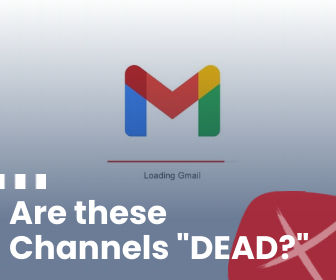
It seems like soooooo many articles/emails/ebooks/Facebook videos are titled something along the lines of: “blank” is dead. Or “Why the new ios update is going to kill email marketing.” Or “3 stats that prove print and mail is dead.” But it is? For the most part those titles are just clickbait, and the content just proves how it is very much not dead.
So, let’s take the three most common “dead” or “dying” marketing channels and see how effective they really are.
Email Marketing
I probably get an email once a week proclaiming the end of email marketing. How can email marketing be “dead?” Statista estimates that close to 320 BILLON emails will be sent every day in 2021. On average, office workers receive 127 every day. And a Forbes article from last year suggested that “every person needs at least four email accounts” for security reasons. However, quantity of emails is one reason some say that email marketing is losing its effectiveness as a marketing channel. Is that true?
Email is often one of the main touch points a brand has with a consumer and many younger consumers prefer to communicate with brands with email. Even email that’s clearly from a mailing list still feels like a direct conversation. Which contributes to email’s engagement rates. Across industry’s email average click-through-rate is 3.71 and the average open rate is 22.9. Although that may not seem like a lot, Facebook, Instagram, and twitters combined average engagement is only 0.58.
Part of the reason email gets better engagement rates is because with email, the message is directly reaching who it’s intended for.
Print and Mail
The death of print and mail has been predicted since the beginning of email. Probably even before then. One of the very first articles in our Weekly Vibe newsletter was called “Print’s Not Dead, Right?” It wasn’t in March 2020, and it defiantly isn’t now.
Direct mail average open rate is somewhere between 68 and 90%, which is double, triple, or quadruple the average open rates of other marketing channels. Do people who open direct mail actually purchase? Yes! On average people who receive direct mail purchase 28% more items and spend 28% more money!
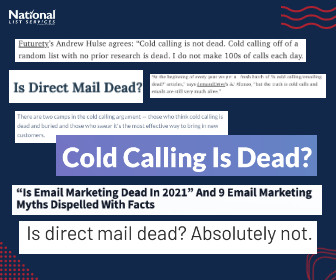
Why is direct mail so effective? It comes down to fact that we (humans) like getting mail. 41% of Americans of all ages look forward to getting their mail every day. We still want very real things in our hands, which is something totally lost in email inboxes or on social media. That tactile connection translates into 💰.
Cold Calling
Cold calling is another one of those things that’s been “on its way out” for years! Why is sticking around? At this point, an actual person to person conversation is a novelty and stands out against digital interactions. And sales, more than anything, based on connections and communications. It’s a lot easier to ignore an email than a ringing phone. It can also be harder to say no to a real person who you can actually hear.
If you add cold calling as part of your omnichannel marketing, work on your pitch, and be prepared to fail, you may be surprised at how effective it is!
What is your favorite marketing channel or tactic that’s been “dead” for years?
5 Ways to Help Emails Reach People
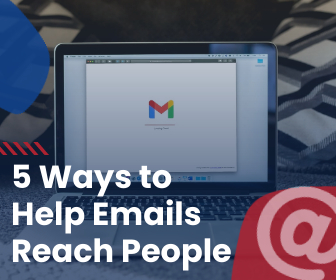
There are so many things that impact an email’s effectiveness. Often, what matters to the consumer and what matters to the email service are very different things. It’s important to strike the right balance in making the consumer and email service happy, as well as reaching your goal in sending the email. So, how can you make sure your emails reach people?
The Email Services
What do email services care about? They care about the backend/behind the scenes stuff. Things like how heavy images are and the amount of content and the types of links. This is where general best email practices come into play.
It’s important to give consumers an opportunity to opt in (and out if they want) of your email campaigns. If you don’t give people a way to opt out, you are breaking federal email laws and get blacklisted or penalized. Give people the option of choosing what types and how much email content they want from you. Follow through on their requests promptly. Legally, you are required to honor their request within 10 business days. Honoring that request promptly will build on their opinion of your brand.
What other email practices are required by law? Don’t use misleading or inaccurate header information such as your “To,” “From,” and “Reply-To” information. You want people to know where the email is coming from and so does the email service provider. Consumers don’t want to get an email from someone they don’t trust, and the email service provider doesn’t want to deliver email like that.
Don’t mislabel the email. The CAN-SPAM act requires that email subject lines accurate reflect the content of the email. That includes ad information. Like most social medias, email is required to tell the consumer if it an #ad. However, there is a lot of leeway on this and how you choose to disclose this information is up to you.
Consumer’s Opinions
Now that you have followed all the email laws and best practices to get your email in your consumer’s mailbox, what else should you do? Well, consumers care about catchy subject lines, engaging and interactive content. Here’s 4 things that will impact your emails effectiveness from the consumer’s point of view:
Choice of Words
Email marketing provides freedom for trying out different types of copy until you find works best for your audience. Every audience is different so what content will be the most effective is also different. It is important to understand your demographics and who your audience is.
Personalized Content
Email is more than just delivered information. It’s a conversation between brand and consumer. Often it a brand’s only way to communicate with customers and can feel very one on one. The consumer feels like they know the brand like a person, so it makes sense if the brand communicates with the consumer as if the know them as well. They are simple things that make that conversation more memorable, for example, many brands use the customer’s name in emails.
Beyond that you can use audience segmentation to separate your audience into groups that share common characteristics like demographics and behavioral information. Using your audience segments to target your message to things that each group are actually invested in can greatly increase how personal your marketing will feel to the customer.
Brand Consistency
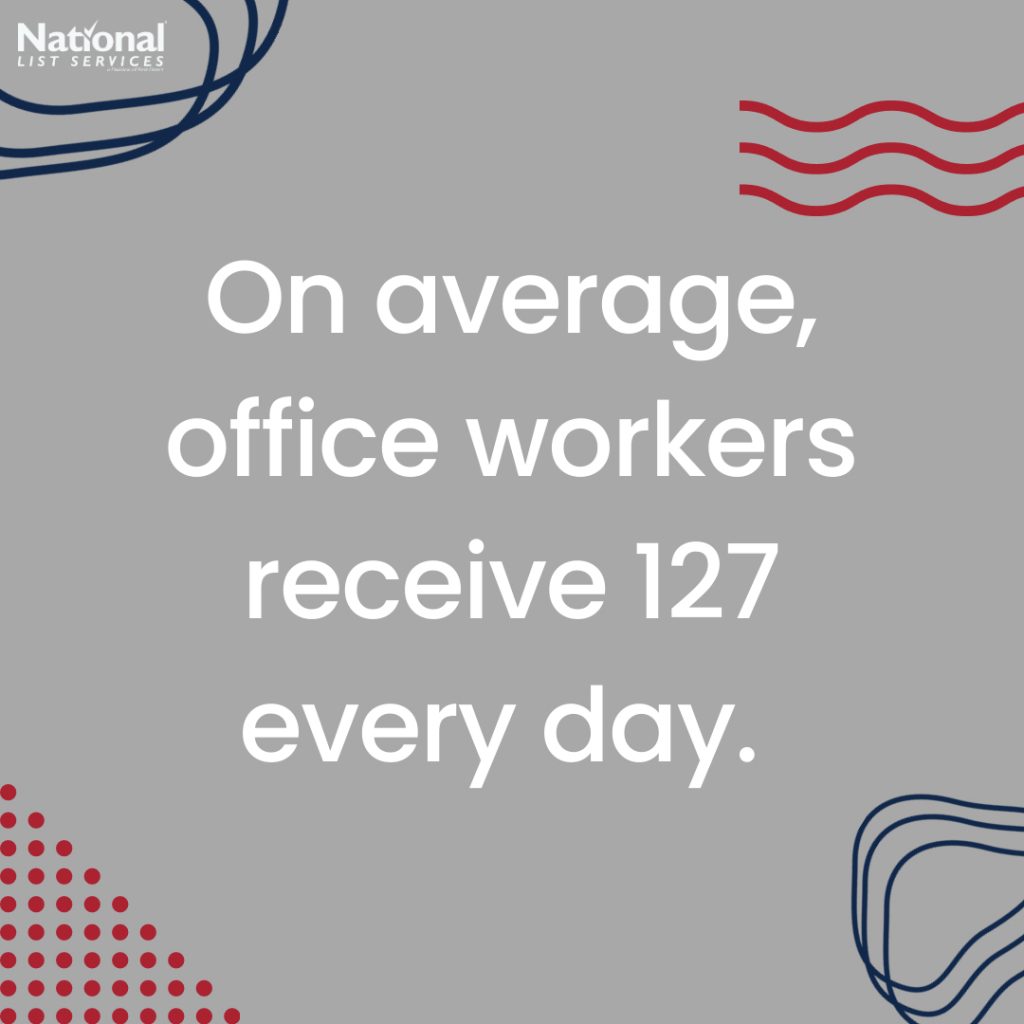
Since email is often one of main touch points brands have with consumers, it’s really important to maintain brand consistency. The consumer needs to know that the message is from you. Keeping that brand consistency helps your brand’s personality shine and helps people get to know you. Brand consistency builds loyalty and trust. It helps the consumer maintain the connection to your brand.
What brand elements should you include in your emails? Your logo, brand colors, and fonts are good places to start. Due to the nature of email, you don’t want to over crowd it with branding. Instead, think about how tone and feeling. Does the way this email is set up feel like how my brand feels?
Don’t waste people’s time
Most office workers receive 127 every day. People don’t have time to read lengthy emails that actually provide them value. Email copy writing is about providing value as succinctly and quickly as possible. Be direct and to the point. Don’t word vomit on people. Use infographics, bullet points, and short paragraph too highlight the point of your message.
What makes you open an email?
Your Marketing Needs These 9 Videos
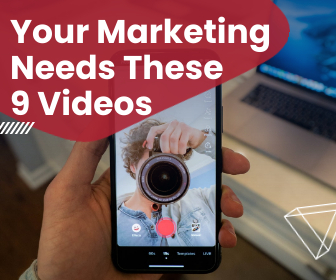
Did you know that are NINE types of videos your business needs? Gone are the days when the only video advertising was television commercials. Now, video is ever-present in our lives. For example, over 2 BILLION users log into YouTube every month. Just like any other tool available, as a business, your brand is going to need different things from different types of videos. Are you using all the kinds of video?
Since different types of videos are used for different things, it’s important to have a well-rounded video strategy. One that helps attract customers, educate them, converts, as well as creates customer engagement and builds relationships. Some types of videos that do that are webinars, promos, digital display, social content, and personalized videos for customers. Some of those are best when heavily scripted and polished, others are great when they feel quickly thrown together. What you need depends on what need you are trying to fill and where the target viewer is on their customer journey. It also depends on how much time, effort, and/or money to pour into video creation.
Explainer Videos
Explainer Video are quick 30-60 videos that explain who you as a company are. It’s basically a pitch video. They great for top of funnel interactions where you need to introduce yourself to potential customers and convince them why they should care about you. They work best when they are made with the audience in mind and feel personal. Don’t forget a strong call-to-action!
You can use Explainer Videos on your website, (think homepage videos) on social media, including YouTube, as well as in ads.
How-To Videos
How-to videos are great for any point of the funnel, can be just about any length, and be used for anything other than ads. However, they don’t need to be extremely high quality or super polished. A real person-to-person feel is more effective. The point of a how-to video is to explain something in a way that will provide valuable content to your audience. This is not the time for a hard sell.
How-to videos are super engaging online because it can feel like pulling back the curtain and letting your audience in on trade secrets!
Promo Videos
Promo videos are basically the general term for commercials. Think short, polished, story driven, exciting videos with strong call-to-actions. They can be used anywhere you need to promote something!
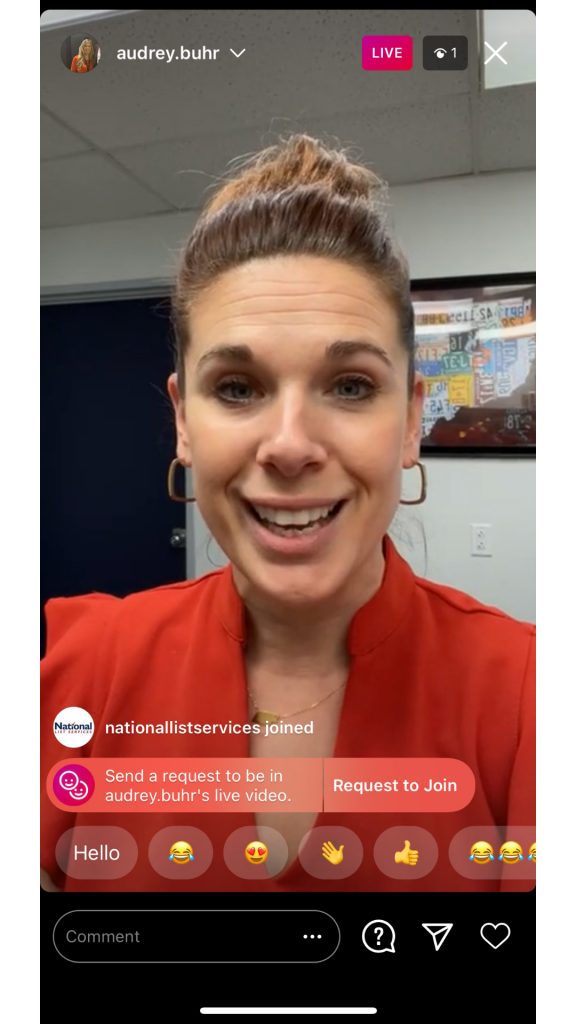
Talking Head Videos
Talking head videos could also be categorized as thought leadership videos. These videos are when you put yourself in front of the camera and share your personality and point of view. These are not designed for a hard sell but instead to show viewers your authentic self and brand personality. Talking head videos work best on social media and on YouTube.
Webinars
I’m going to include podcast videos here as well, (like the video recordings that most podcasts film while recording.) Webinars are inherently educational and therefore the focus needs to be on providing content for your viewers, not selling them. Most webinars are between 15-60 mins. And like in person seminars, they can take many forms: live Q&A’s, lectures, or panels.
Hosting a webinar takes a bit of IT knowledge so it’s totally ok to use a hosting service! It’s a good idea to have a moderator (and maybe an A/V guy) on hand for any troubleshooting or technical difficulties. After the webinar is finished you can make it available for on-demand viewing, as well as cutting the webinar up into smaller clips.
Case Study Video
A case study tells the story of how a real customer uses your product. It provides validation from a third party. Case study video work best when they are clearly planned out and polished. Include the customer/video star on the planning process, that will make the video more authentic. Focus the video more benefits rather than features and back up the information with data.
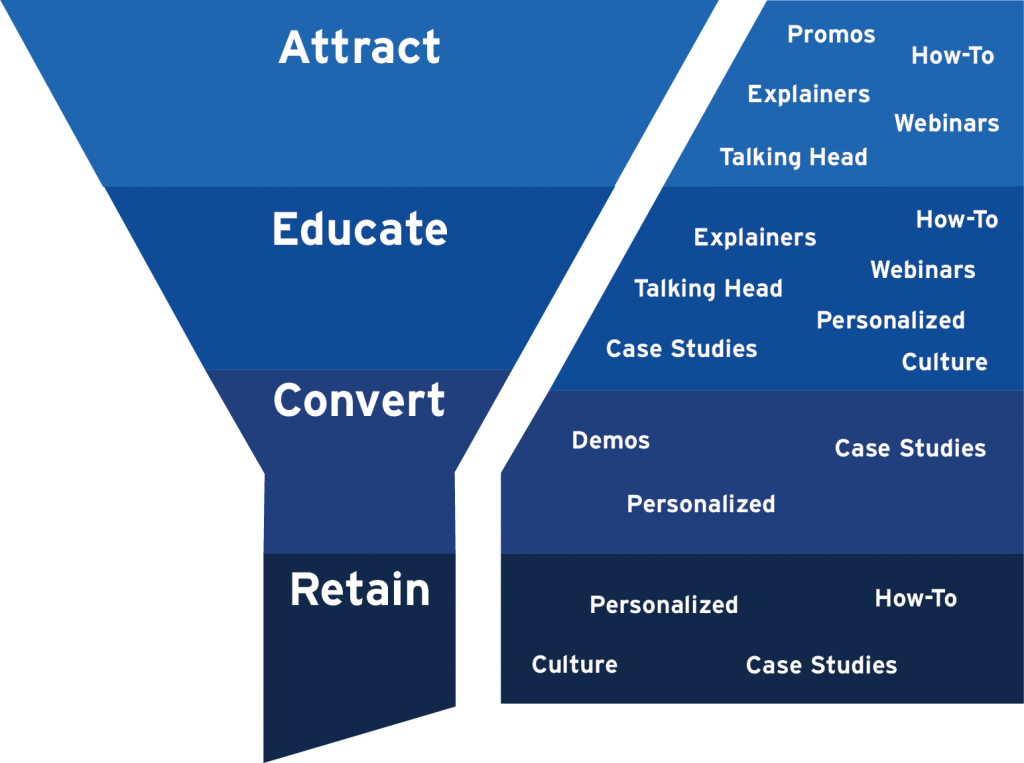
Fun/Culture Videos
These videos are a way to highlight your company’s culture and personality. They help tell your brand story and personality. Often these videos are narrative driven, fun, and humorous. A good example of culture videos is pretty much every company’s TikTok. They are quick and fun and feel personal.
Demo Videos
A demo video is a video that highlights how a product or service actually works. It’s there to educate and inform viewers. Keep the video as concise as possible. They can take a few forms: a broad overview, pre-recorded demo, or live demonstration. For example, we have broad overview demos of National List Services on YouTube, we prerecord demos to onboard clients or answer technical questions, (Loom is great for this) and we often do live demos when showing potential clients how our systems work.
Personalized Videos
Who doesn’t love a personalized video? Sending videos instead of texts or emails to clients is a big part of our follow up. It’s so much more touching to see someone’s face and hear your name than just a written follow up. Because of the nature of our business there are some clients we have never actually met face to face and sending them a personalized video can help bridge that gap.
So, with so many avenues and different types of videos, it’s easy to see why it’s such a popular marketing tool. How do you use video in your marketing?
Email List Opt-Ins Explained
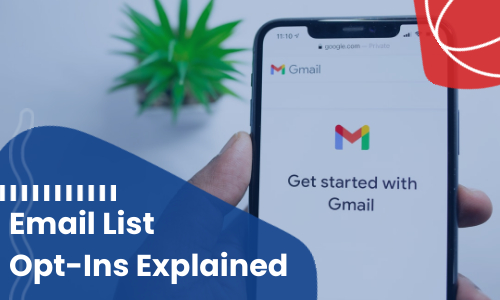
Although “the end of email” has been threatened may times in recent years, this year has shown us that email lists aren’t going anywhere. In fact, more than 50% of people in the US check their personal email over 10 times a day! Most people say that it is still their preferred way to communicate with brands.
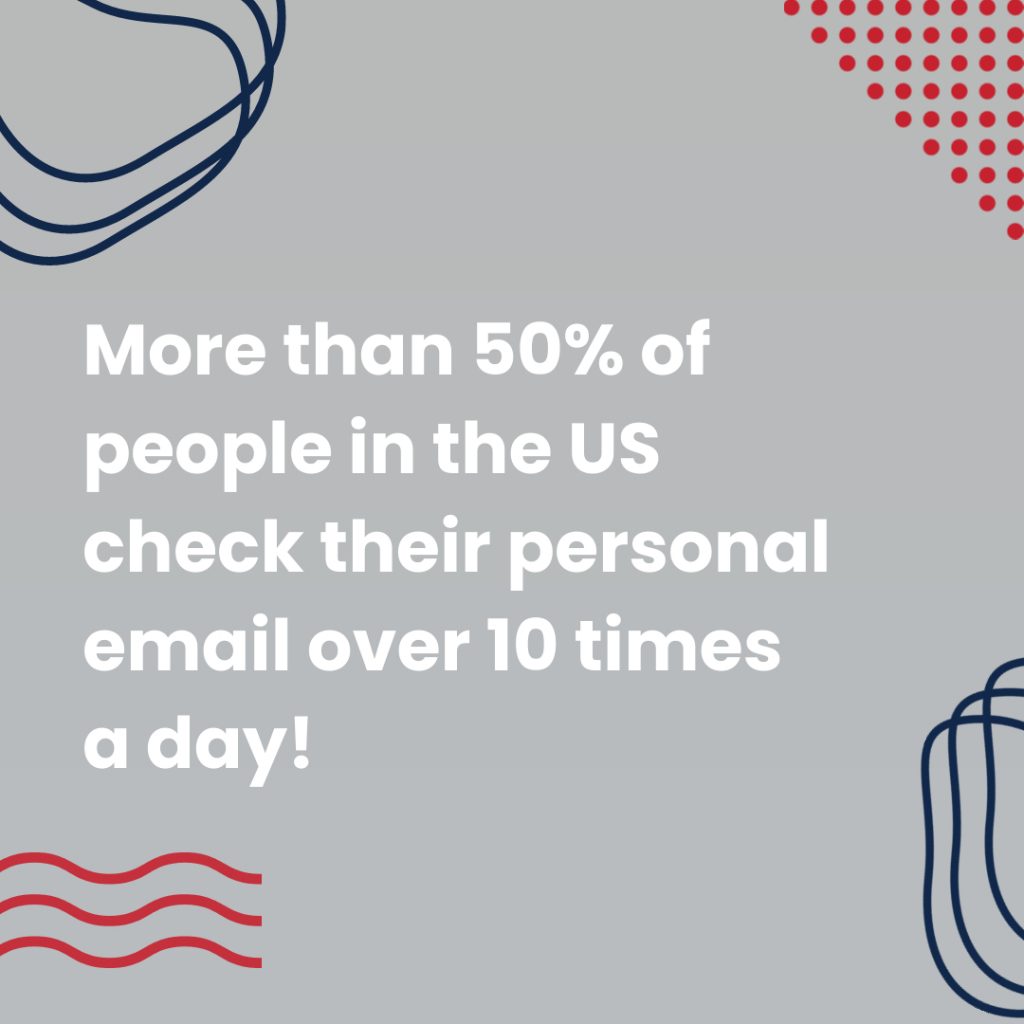
Email Marketing is still a great way to reach a lot of people relatively cheaply. It still is an extremely effective marketing channel.
How Can You Use Email Marketing?
Email Marketing can be used for many purposes. For example, looking to send a high-impact promotion, invitation to an event, a newsletter, an online survey, or want to expand your client list? Email Marketing can do all of that!
Email is a great way for customers to stay in touch with brands and keep up on what ways they can buy from them.
What do the Opt-Ins Mean?
E-mail Marketing doesn’t have to be complicated! There are many available streamlined methods to help you market more effectively and efficiently. There are even multiple types of email lists or processes: Single Opt-in, Double Opt-in, or Guaranteed Open campaigns. Using the right type of campaign can help you simplify the whole process.
- Single opt-in is when an email address is added to your mailing list without needing the address owner to confirm or acknowledge they’ve been opted in. This is great for simplifying the process: for you and the people you are emailing. Less points of contact before a campaign also lower failure rates and raise engagement rates!
- Double opt-in is also sometimes called confirmed opt-in. The second, or double, opt-in is often in the form of a confirmation link sent either to their email or in a subscription activation page. After they confirm their email, then they are added to your mailing list. Double opt-in is great for making sure that your email ends up in your target address’s box. And since the user took the time and effort to do the extra opt-in, you know that they are truly interested in whatever they are opting-in to!
- Guaranteed Open are when you pay for the number of “emails opened” instead of paying for the number of “emails sent.” Guaranteed Open emails are sent in segments until the purchased number of opened emails is reached. Using guaranteed open is a very effective way to make sure your email reaches your desired audience. They are also great for driving traffic to your website!
You may be surprised how easy and affordable it is to connect with your existing or potential customers / members with email marketing!
There Are So Many Benefits of Email Marketing:
- Personalized Connections with Customers
- Collect Feedback and Data About Your Customers
- Drive Sales
- Drive Traffic to Your Website and Products
- Quick Turnaround Time
- Cost Effective and Scalable
- Building First-Party-Data Resources
- Provide Valuable Content for Your Audience
The opportunities and possibilities are endless!
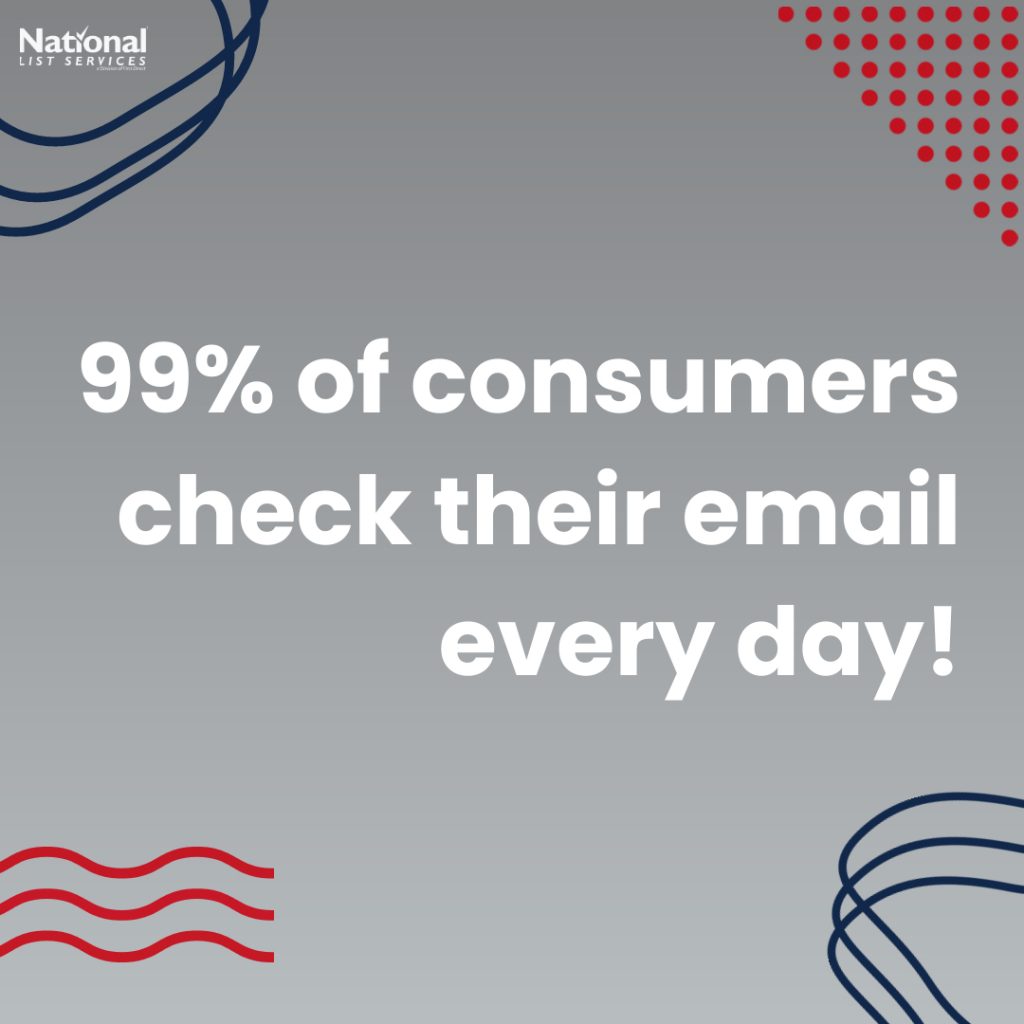
Email Trends… Personalization!
Personalization is a big key in reaching your customer’s heart. Using the customer’s name in things like email subject lines is a good first step. Beyond that you can use audience segmentation to separate your audience into groups that share common characteristics like demographics and behavioral information. Using your audience segments to target your message to things that each group are actually invested in can greatly increase how personal your marketing will feel to the customer.
How to you use email lists?
Should You Repurpose Content?

So, should you repurpose content? Yes! Recycling or repurposing content has a lot more advantages than just saving time. (Although that is very helpful. As the old adage says… Time is Money! 💰 )
What does it mean to repurpose or recycle content? There are a couple ways to do it. One way is to repost or reshare the content as is. A lot of companies do this with TBTs or just highlighting past content. Another way to repurpose content is to take old content and use it as an outline for new content.
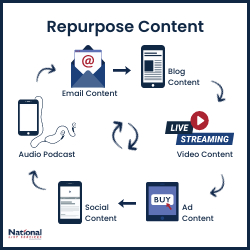
For example, once a Live Video stream is over, the audio can be published as a podcast on platforms like Spotify or Apple Music. Video clips of highlights can be repurposed into social content or ads. As well as pull quotes. The transcript can be turned into a blog article.
(This article is based off an outline for a live video, that was in turn, based off another blog article, that was itself based off one of Live Roundtables. Content can generate other content.)
What’s Your Message?
If you have been making content for a while, you probably have a good idea of what your message is. So, no matter what you do, some part of everything you create will be a reiteration of something you’ve said better before. That’s a good thing! Constantly adding drastically different messaging can create a confusing overall brand message. Your brand pillars and values aren’t going to change so your general message probably won’t either.
For example, the foundation for everything we do is using accurate data to create effective marketing. All the content we create is in some way or another connected to that. Therefore, it makes sense that we reiterate ideas and messages. That doesn’t mean that we don’t have anything new to say because there are always new ways of approaching information. The world around us, as well as technology and industry standards are always changing. There are always new things that can be added. Adding information keeps your messages up to date. Up-to-date content is more accurate and provides for value to your followers.
Your Audience Grows and Changes
Another reason to recycle content is that it gives more people an opportunity to see it. And even if someone has been following you for a long time there’s a good chance that they didn’t see the content the first time around. Social media platforms notoriously fail to consistently promote content. And we are all busy, it’s easy to miss something. And your followers might appreciate or need a piece of content now, more than they did when it was first published. Repurposing the information is a way to help your customers get the information they need.
Know What Your Customers Need
The more times goes on, the more you know about your audience’s interests. We are all constantly learning about our followers and audience. The more time goes on the more First Party Data is available. Knowing more about who your customers are can help you to understand what content they actually need. You can then reframe the information that you know would more benefit them.
Recycling Content Boosts SEO
One added benefit of repurposing content is that it boosts SEO. Search engines like to see a lot of content that revolves around a single topic. It shows a consistent brand message and purpose. A consistent brand message can indicate brand value.
What ways do you repurpose content?
The 4 Keys To Success In This Environment

We know all the ways things have changed this year. We also know how much trends ,such as relying on digital marketing channels, has sped up. It makes us wonder what we can do to survive and adapt with these changes. Here are four keys to success.
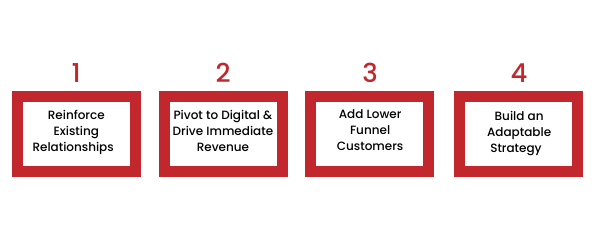
- Reinforce existing relationships. Which means reaching out and keeping in contact with existing and previous customers. Email and social channels are a great way to do this. Having up to date email and other information in your CRM is therefore, critical. Personalizing messages can help you stand out. It’s also important to figure out what channel your customers prefer to buy from you. Compare the current channels to what they preferred before this year to see the direction you should be focusing.
- Pivot to digital and drive immediate revenue. Without money coming in, it’s very hard to build a strategy for the future. Therefore, make sure your team and any tools or tech you need is ready to go.
- Acquire lower funnel customers. A lot of customers now are skipping the “passing interest” phase. They do research, find you, then buy. Making it easy for customers to find you when they are looking is important. Capitalize on lower funnel customers by knowing exactly how they got to you. One way to do that is by utilizing Pixel data. (Want more information on Pixels? Click here.)
- Position for success as this reverts back to “normal.” Have a plan. One thing to think about when building your plan is to create structures with the shifts in buying habits shift in mind. Test and experiment with different types of engagement now to see what channels to focus on on the future.
What do you think the key to successfully navigation the new marketing landscape is?
How To Make Personalized Ads Less Creepy
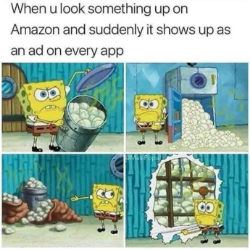
We all have heard the jokes about how our phones are listening. Our phones, and tablets, and watches, and computers, and smart speakers. Therefore, when we get super personalized ads it can feel a bit creepy. Like, how do they know my name? and I was literally just talking about this? So, how can we find the balance between personalized marketing and creepy personalization?
Why do we need personalized marketing in the first place?
In order to stand out in this digital world, brands need to communicate with their customers in a way that shows that the brand cares about the same things their customers do. This is especially true in social media. Social media can feel like customers have 1-on-1 relationships with the brand they follow. They can build relationships that feel personal.
Here’s a few ways to make personalized marketing effective and not jarring:
- Start with the information you have about your customers. It’s difficult to know what your customers want if you don’t know who they are. Look at your 1st party data. What are your most common demographics? What are their interests? How would they most like to be communicated with?
- Use the tools available. Marketing automation platforms and CRMs can do a lot of the heavy lifting when it comes to segmenting data. Many of them are designed to help create simple, personalized messages.

- Have a well thought out plan. Do you have a mapped-out customer journey? Knowing where in their journey your customers are makes a big difference in the types of personalization that will work for them. Think about nurturing. Pay attention to the details. Make sure that the little things that can be annoying such as, getting an abandoned cart email even though you’ve already come back to purchase it, are gone.Get rid of triggers that are connected to repurchasing products commonly only purchased once. (looking at you, toilet seat.)
- Know when to walk away. Keep your data clean. If someone has never opened an email it might be a good idea to take them off your list. Their data could skew your demographics and could make understanding what personalization your active customers need difficult.
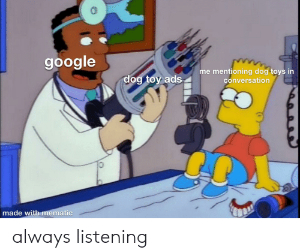
What’s the creepiest personalized advertising you’ve ever seen?
